#ancient greek mosaics
Photo

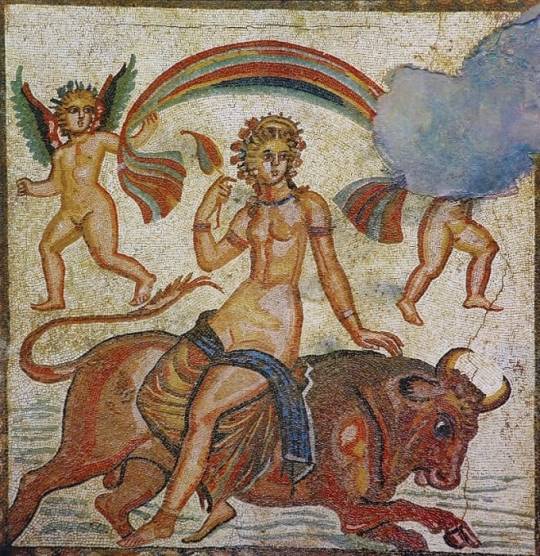
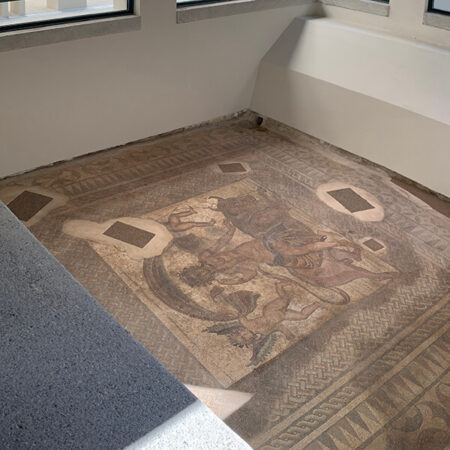
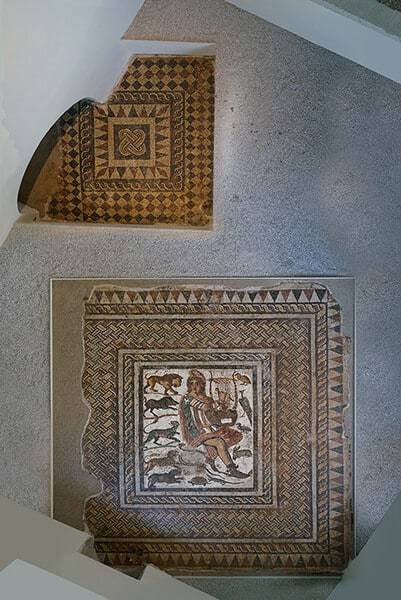

Stunning Ancient Mosaics Adorn New Museum in Sparta, Greece
Two rare Roman floor mosaics discovered in Greece will feature in a new museum in Sparta which officially opens on November 21st.
The Abduction of Europa and Orpheus with the Animals mosaics were accidentally discovered in the late 19th century on private property.
The two mosaics discovered in 1872 and 1877 are from the end of the 3rd century AD and the start of the 4th century AD.
Mosaics in Greece fell to obscurity
Until now, the mosaics had no permanent home. One was left in a private garden while the other was placed in a wine storage space. The property was bought by the state, and a shelter was erected over them after which the mosaics fell to obscurity.
Researchers believe the two mosaics were part of the decoration of a bath complex. Possibly, the bath infrastructure and mosaics were part of a rich Roman house or two neighboring ones.
Both are distinguished for their composition, rich colors, and craftsmanship.
The 2.05 x 1.98 meter mosaic with the representation of the Abduction of Europa is the central theme of a larger mosaic floor. The woman is depicted sitting on the back of a bull, the form taken by Zeus, in motion towards the right while two winged cupids frame the figure.
With the introduction of the euro as the common European currency on January 1, 2002, Greece chose the representation of the Abduction of Europa in the Sparta mosaic as the motif for the two-euro coin, designed by Giorgos Stamatopoulos.
Orpheus is a Thracian bard, legendary musician, and prophet in ancient Greek religion. He was also a renowned poet and, according to the legend, traveled with Jason and the Argonauts in search of the Golden Fleece. He even descended into the Underworld of Hades to get his lost wife, Eurydice, back.
Mosaics discovered in Greece tell the story of Europa and Zeus
In Greek mythology, Europa was a Phoenician princess of Argive Greek origin and the mother of King Minos of Crete. The continent of Europe is named after her.
Zeus, the king of the Olympian Gods, transformed into a beautiful white bull to abduct her. The story of Europa is one of the most famous tales of love and lust between the gods.
Zeus was not only known for being the most prominent deity in the ancient Greek pantheon. He also had a reputation for endless love affairs.
Europa was picking flowers with her helpers when she suddenly saw the bull approaching from afar. The princess was astonished by the beauty of the animal. As they neared each other, he quickly leaned down at Europa’s feet in an act of utter submission to her. Encouraged by her helpers, she climbed on the animal’s back.
Zeus got up and slowly started walking around. Soon, however, he accelerated his pace and eventually broke into a gallop, with Europa clinging on for her life. The king of the gods and the frightened princess reached the seaside and dived into the sea.
Zeus had carried Europa from Phoenicia to Crete. Once they got to the island, Zeus reclaimed his human form and finally materialized his lust by mating with her under an evergreen tree.
Europa’s earliest literary reference is in the Iliad, which is most likely from the 8th century BC. Another early reference to her is in a fragment of the Hesiodic Catalogue of Women, discovered at Oxyrhynchus. The earliest vase-painting securely identifiable as Europa dates back to the mid-seventh century BC.
By Tasos Kokkinidis.
#mosaics#Ancient Greek mosaics#Stunning Ancient Mosaics Adorn New Museum in Sparta Greece#archeology#archeolgst#ancient artifacts#history#history news#ancient history#ancient culture#ancient civilizations#greek history#ancient greece#ancient greek art
33 notes
·
View notes
Text


Situated in the House of the Faun, one of Pompeii's grandest residences, the Alexander Mosaic captures a pivotal moment of combat between two of antiquity's most famed figures: Alexander the Great and King Darius III of Persia. Unveiled to the world during excavations in the 19th century, this intricate masterpiece is believed to date back to around 100 BC.
Unlike many of its contemporaries which chronicled gods, myths, or benign depictions of daily life, the Alexander Mosaic chooses to bring forth the tempestuousness of battle, with its swirling chaos, the intensity of warriors, and the urgency of a combat's climax. The mosaic is not a mere static depiction; it throbs with dynamism and emotion, capturing the very essence of the turning point in the battle.
The artistry involved in this mosaic is nothing short of phenomenal. Each tessera, or the small tile used in the mosaic, is meticulously placed, creating a depth and realism that is astounding for its age. The contoured faces of Alexander and Darius are especially striking, with each expressing a world of emotion — Alexander's determination and Darius's dismay at the unfolding defeat.
355 notes
·
View notes
Text
Ancient Necklace with Mosaic Glass Beads, from the Eastern Mediterranean, c.100 BCE-100 CE: this necklace is composed of 30 glass beads, most of which are decorated with stylized faces

From the John Paul Getty Museum:
The beads are made of multi-colored opaque glass and are decorated with heads and floral designs. The necklace is in good condition; some beads are chipped or cracked.

The exact origin of this piece is unknown, but it can be traced back to the Eastern Mediterranean, where it was likely made by a Greek or Roman artist.
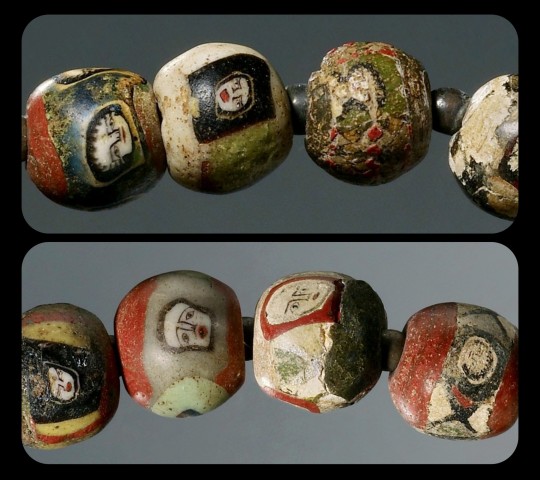
Each bead has a width of about 1.2cm (roughly half an inch); they're decorated with remarkably intricate details, and each face is depicted in its own unique style.

Sources & More Info:
John Paul Getty Museum: Necklace with Mosaic Glass Beads
#archaeology#artifact#history#ancient history#art#greek#roman#ancient art#antiquity#jewelry#beading#glass art#mosaic#crafting#greek art#roman art#eastern mediterranean#ancient#necklace#fashion#style#classical archaeology
75 notes
·
View notes
Text
Kinda surprised by the amount of art of Eros messing with animals and other creatures just because
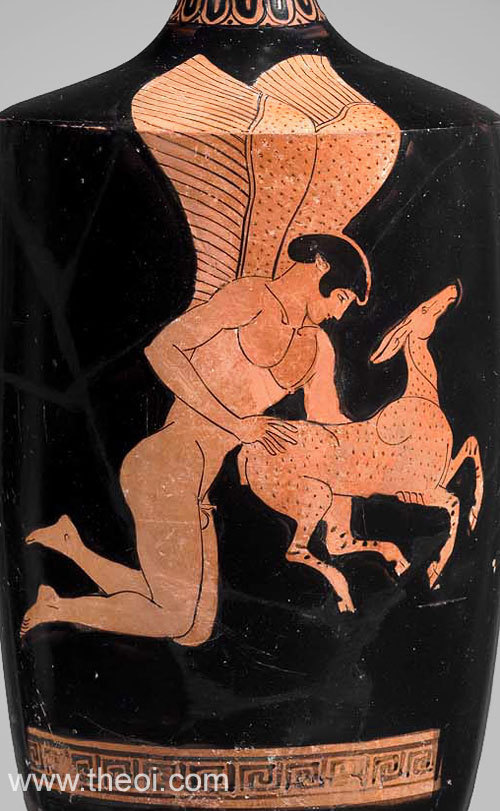
Eros bearing a fawn

Eros chasing a deer

Eros riding deers

Eros riding a crab (??????)
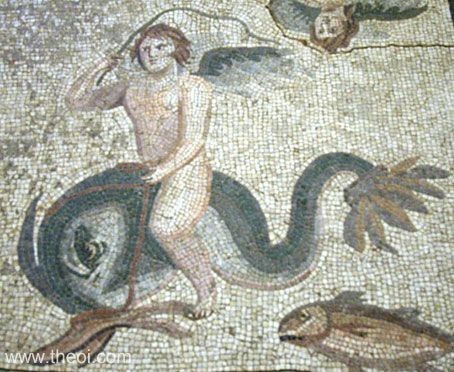


Eros riding dolphins (X X X) (WHY DOES HE HAVE A WHIP. PUT THAT DOWN.)
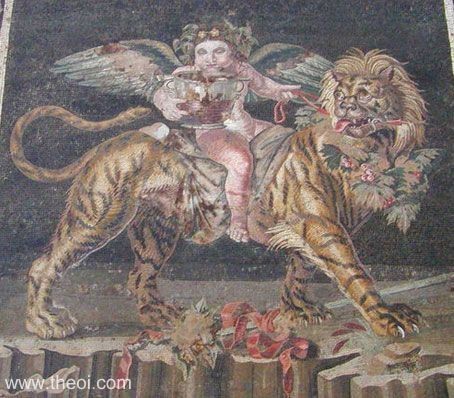
Eros riding a tiger
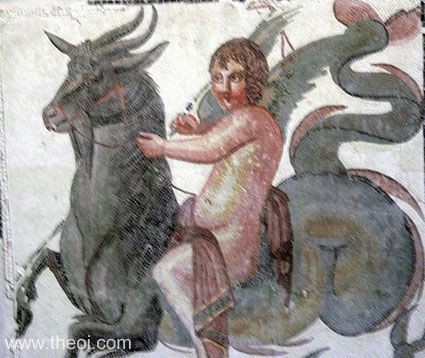
Eros riding Aegipan

Eros riding a centaur
Hes such a little menace. I love him actually
#Eros' haters heres the exit door ➡️🚪‼️#/j#he was bored#Don't be distracted in his presence because you WILL be tamed#sculpture#mosaic#cupid#erotes#art#greek mythology#mythology#greek myths#greek myth#myths#myth#mythos#mythoi#ancient greece#roman empire#ancient rome#greek god#greek gods#eros greek god
187 notes
·
View notes
Text
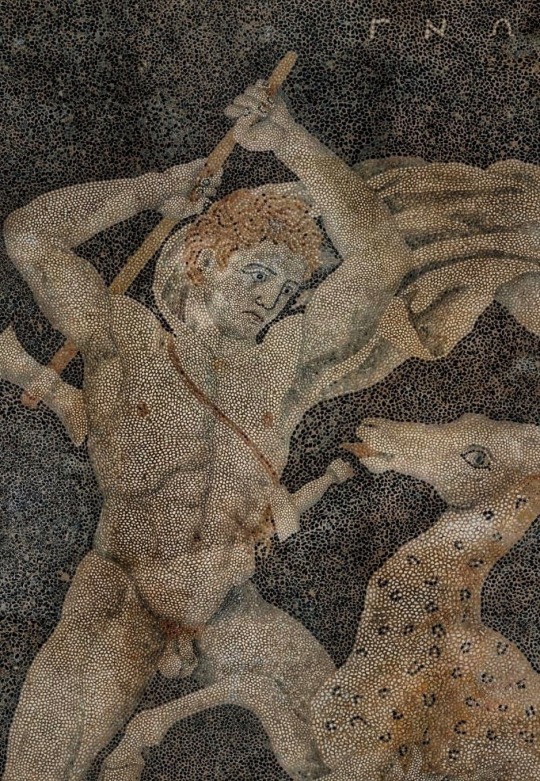
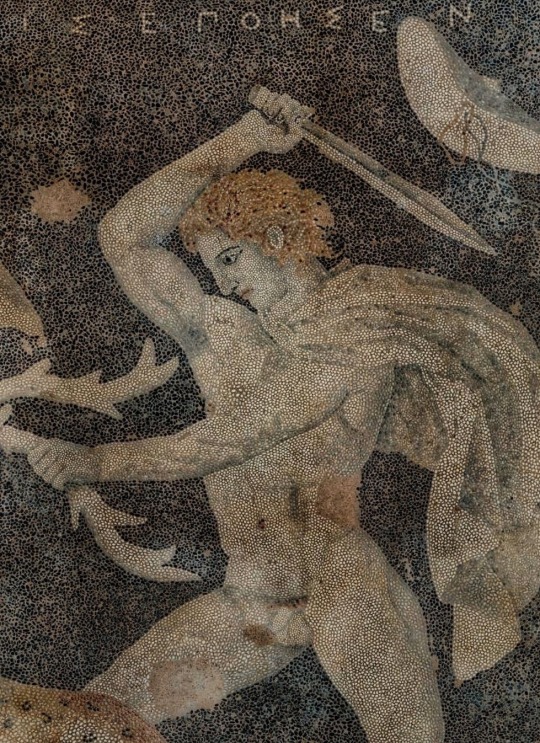
The Stag Hunt Mosaic (c. 300 BC). From the House of the Abduction of Helen, Pella, Greece. (details)
#mosaic#pella#greece#europe#art#archaeological#archaeology#mosaics#antiquity#history#european#stag#hunt#hunters#hunting#alexander the great#hephaestion#macedonia#macedonian#ancient greek#ancient greece#museum#floor#pebble#pebbles#greek#axe#sword
307 notes
·
View notes
Text

A well-preserved mosaic from the temple of Apollo
This mosaic is the original from the temple of Apollo at the Ancient Letoon, a religious Anatolian complex devoted to Leto and Her children - patron Gods of Lycia. Letoon is considered to have been around before the Hellenic influence in the region, though over time it has become a place of mixing of many cultures and eras.
The mosaic, for example, dates back to around 400 BCE when the temple to Apollo within the Letoon complex was built by King Erbinna, a Lycian ruler. The solar symbol in the middle is believed to symbolize Lycia, the land of the Sun. The quiver of arrows and the lyre are for Apollo as well.
Currently, the original is at the museum in Fethiye, Turkey. The mosaic presented at the site is a modern replica created after the original was removed.
Photo source: 🏺
#ANTIGÜEDADES 💎#ancient art#ancient anatolia#ancient lycia#ancient turkey#letoon#mosaic#apollo#greek mythology#greek gods#anatolian gods
33 notes
·
View notes
Text
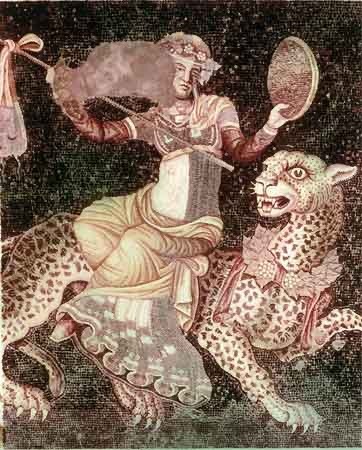
Dionysus Riding a Leopard, Mosaic, House of Masks in Delos, Greece, c. 120-80 BC. What a riot.
#ancient greece#art#art history#ancient history#greece#greek mythology#greek gods#dyonisus#mosaic#ancient art#antiquity#big cats
26 notes
·
View notes
Text

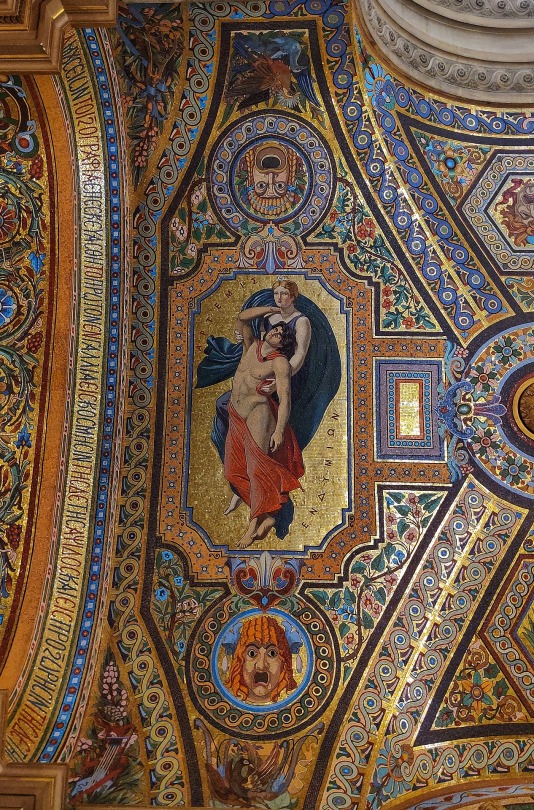


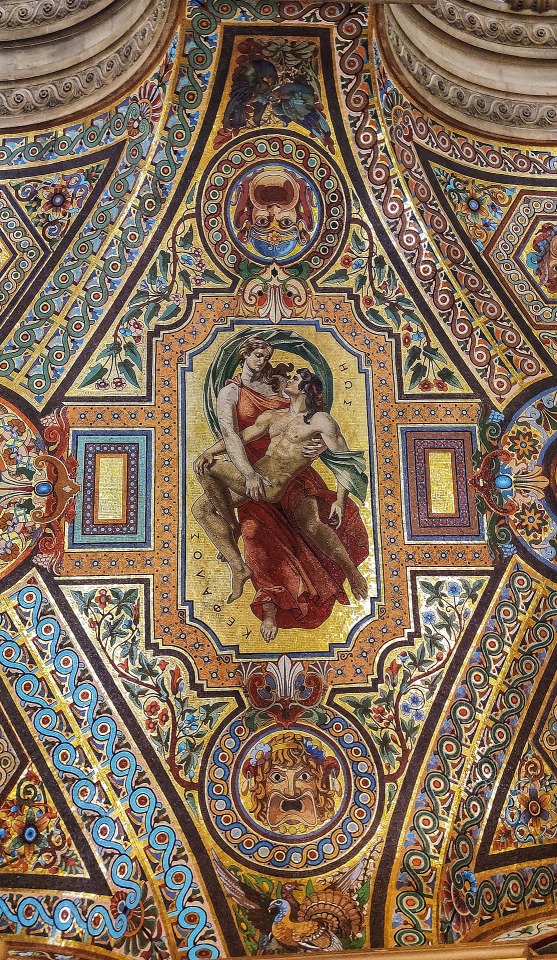
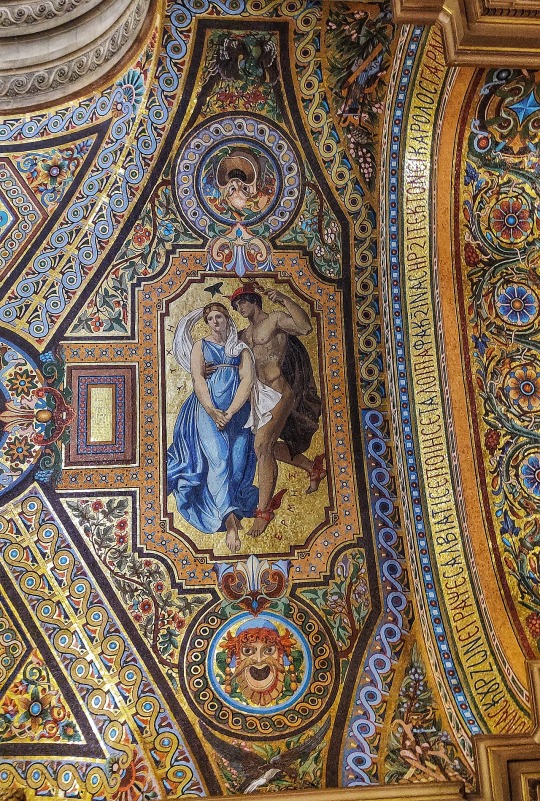

Avant Foyer/“Foyer of Mosaics” of the Opéra Garnier: the four pair mosaic panels + Byzantine Greek inscriptions
(order from left to right, top to bottom)
Artemis (ΑΡΤΕΜΙΣ) and Endymion (ΕΝΔΥΜΙΩΝ)
Orpheus (ΟΡΦΕΥΣ) and Eurydice (ΕΥΡΥΔΙΚΗ, misspelled as “ΕΥΡΙΔΙΚΗ”)
Eos (ΗΩΣ) and Cephalus (ΚΕΦΑΛΟΣ)
Hermes (ΕΡΜΗΣ) and Psyche (ΨΥΧΗ)
The two inscriptions, written in 8th century Byzantine Greek uncial script across the two arches, read:
[1] “Η ΔΙΑ ΜΟΥΣΕΙΩΝ ΤΟΙΞΟΓΡΑΦΙΑ ΕΠΕΣΚΕΥΑΣΘΗ ΤΟ ΠΡΩΤΟΝ ΕΝ ΓΑΛΛΙΑ ΕΙΣ ΚΟΣΜΗΣΙΝ ΤΗΣΔΕ ΤΗΣ ΑΨΙΔΟΣ ΚΑΙ ΕΙΣ ΠΡΟΞΩΡΗΣΙΝ ΤΗΣΔΕ ΤΗΣ ΤΕΞΝΗΣ”
[2] “ΤΑΣ ΕΙΚΟΝΑΣ ΚΟΥΡΖΩΝ ΕΓΡΑΨΕ ΣΑΛΒΙΑΤΙΣ ΕΠΟΙΗΣΕ ΤΑ ΛΟΙΠΑ ΦΑΚΞΙΝΑΣ ΗΡΞΙΤΕΚΤΟΝΕΙ ΚΑΡΟΛΟΣ ΓΑΡΝΙΕΡ”
The inscriber most likely mixed up the Greek letters Ξ (xee) and X (chi), influenced by the Latin X which corresponds to Ξ phonetically.
The Σ’s have been stylised as the Medieval Greek lunate sigma (C).
The ȣ ligature, commonly found in Byzantine manuscripts and inscriptions, has been used instead of the vowel digraph ΟΥ to represent the /u/ sound.
Text colour alternates from blue to red following word separation and progression in order to divide one word from the next.
Translated text, as interpreted by me:
“Muraling with the use of mosaic tiles was constructed for the first time in France for the ornamentation of this very vault and for the advancement of this particular craft.”
“Curzon designed the images, Salviati made [them], Facchina [made] the rest. The architect was Charles Garnier.”
#palais garnier#opera garnier#paris opera house#greek mythology#architecture#art history#culture#opéra national de paris#classical music#opera#ancient greek#mosaic
154 notes
·
View notes
Text
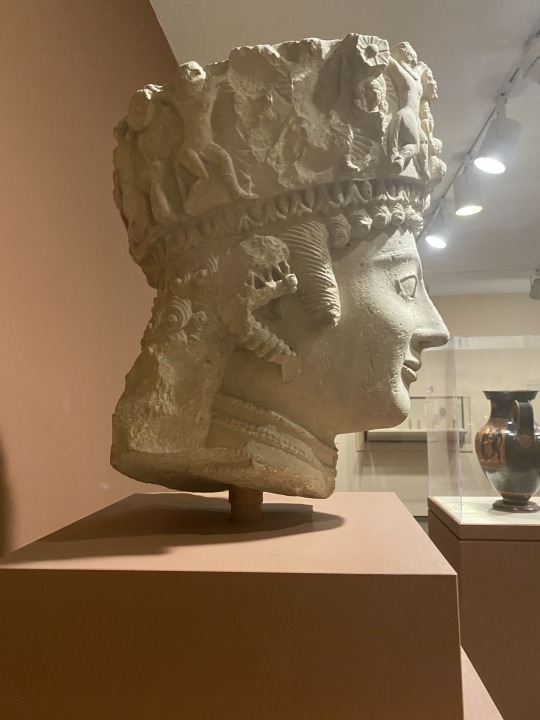

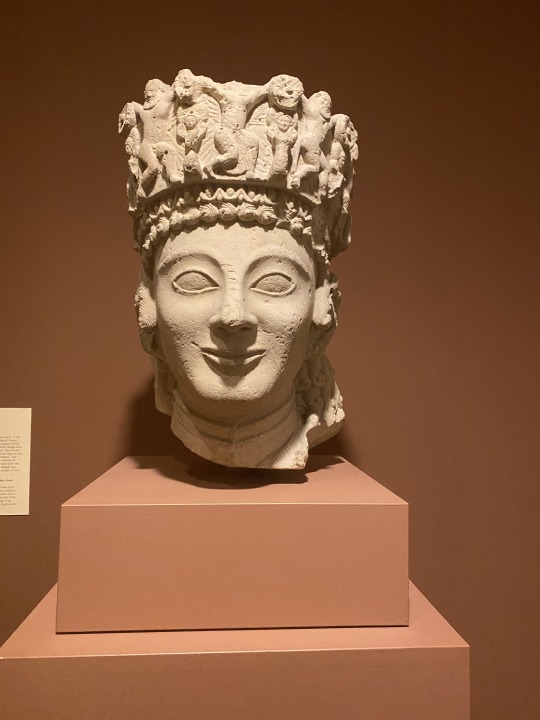


Photos I took at the Worchester art museum! Cypriot head suspected to be Aphrodite, Hermes with the infant Dionysos, and Dionysos and Ariadne
I would not shut up about this stuff but that’s okay because anyone inviting me to a museum knows this will happen!
I also would have gotten a picture of the Worchester hunt but… I couldn’t haha. It was too big
9 notes
·
View notes
Text
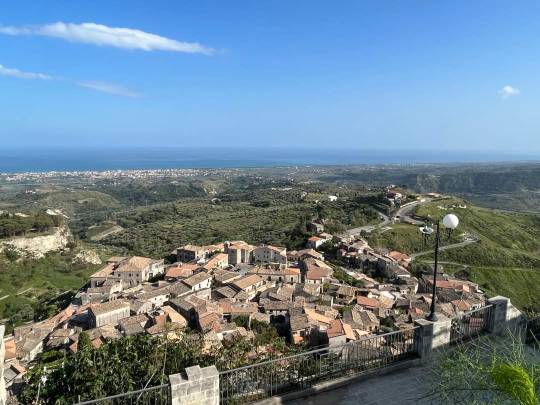
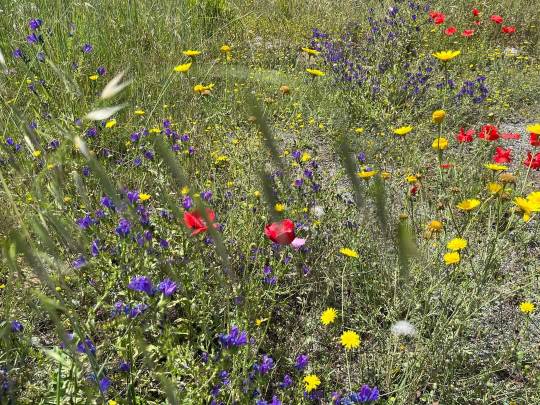

The medieval village of Gerace and the Roman baths of Casignana on the Ionian Coast of Calabria, Italy
Photos by Calabria: The Other Italy
Follow us on Instagram, @calabria_mediterranea
#calabria#italy#italia#south italy#southern italy#gerace#casignana#mediterranean#mediterranean sea#mosaics#mosaic#ancient#history#ancient history#roman#greek#art#ancient art#villages#village#ionian sea#ionian coast#europe#italian landscape#italian#landscape#italian landscapes#landscapes#nature#flowers
43 notes
·
View notes
Text
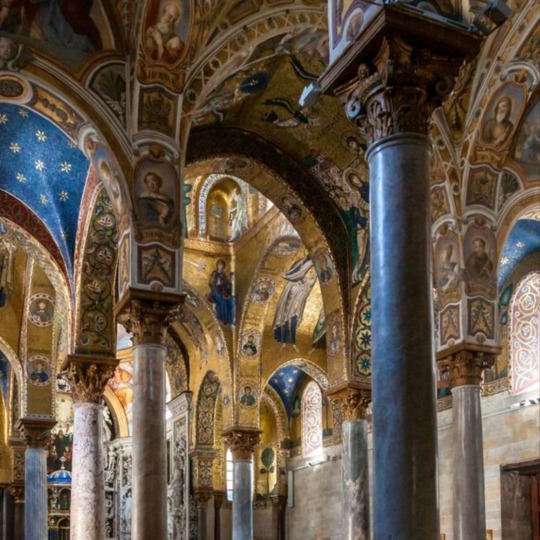
4 notes
·
View notes
Text
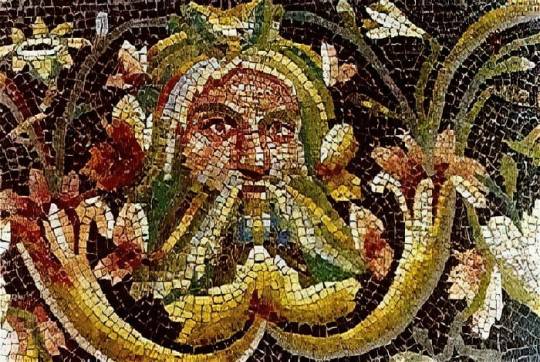
The Stunning Ancient Greek Mosaics of Zeugma
The ancient Greek mosaics of Zeugma in Turkey are true archaeological treasures that can still be admired at the Zeugma Mosaic Museum in Gaziantep, Turkey.
The 30,000-square-meter (320,000 square foot) museum, which opened its doors in September of 2011 is the largest mosaic museum in the world, containing 1,700 square meters (18,000 square feet) of ancient works of art.
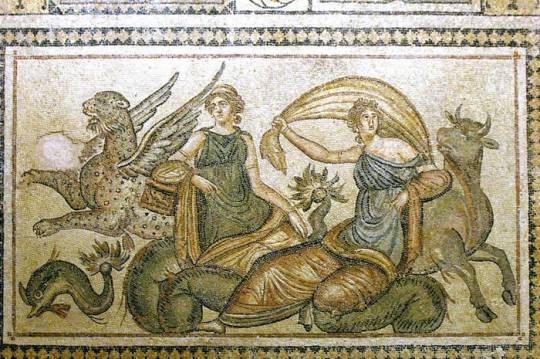
The museum focuses on the mosaics found in Zeugma, which was originally founded as Seleucia by Seleucus I Nicator, a general in Alexander the Great’s Army, in 305 BC.
After Alexander’s death, his generals divided his empire among themselves. Although Seleucus moved his main capital to Antioch, Seleucia became an important center of trade, Hellenistic culture, and regional government under the Seleucids.

The city was populated by Greeks, Syrians, and Jews. It was an affluent city with a population of eighty thousand and in the 2nd and 3rd century BC was of sufficient stature to be compared to another great center of Hellenism, Alexandria, in Egypt.
The Roman Empire’s forces conquered the city in 64 BC, renaming it Zeugma (meaning “bridge” or “crossing” in ancient Greek).
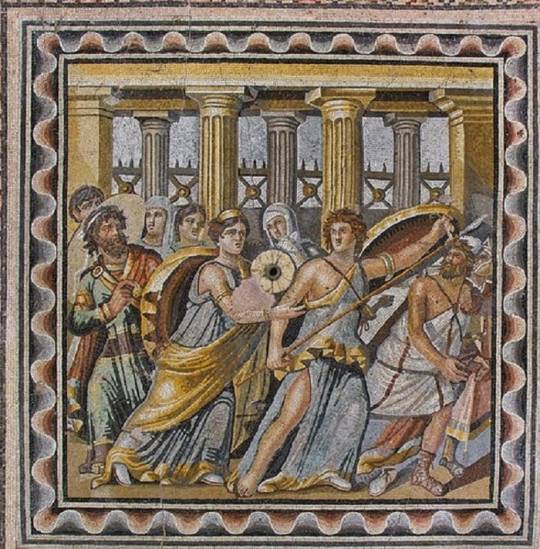
The Romans held Zeugma until 253 AD, when the Persian Sassanids conquered the city, putting a violent end to its most significant years.
The ancient Greek mosaics of Zeugma
The treasures of Zeugma, including its vaunted mosaics, remained relatively unknown until the year 2000. Zeugma is now eighty percent underwater after it was flooded with the waters of a nearby artificial lake.
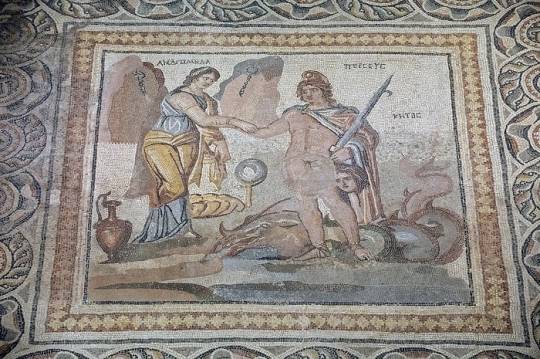
Archaeologists were alarmed at the flooding of the area and immediately began excavations to save the ancient treasures.
Most of the Greek mosaics of Zeugma, which were recovered in excellent condition, belong to the 2nd century BC preceding the Romans.

However, some of the mosaics appear to belong to the Roman era, as they depict Greek and Roman deities together.
In addition, some of the mosaics deviate from purely Hellenistic style and imagery, with archaeologists placing them in the Roman era of the city’s history.
The archaeological site of Zeugma
The archaeological site of Zeugma is a UNESCO World Heritage Center, located ten kilometers (six miles) away from Nizip within the boundaries of Gaziantep.
The preserved parts of the ancient city include the Hellenistic Agora, the Roman Agora, two sanctuaries, the stadium, the theater, two bathhouses, and the Roman legion military base.

Remains of the administrative structures of the Roman legion, the majority of the residential quarters, Hellenistic and Roman city walls, and the East, South and West necropolis can also be found there.
The archaeological site of Zeugma is of immense historical significance in the understanding of the ancient integration of Hellenistic and Semitic cultural spheres and the birth of syncretistic hybrid cultures in the region.
By Philip Chrysopoulos.
#The Stunning Ancient Greek Mosaics of Zeugma#Gaziantep Turkey#the largest mosaic museum in the world#Seleucus I Nicator#Alexander the Great#mosaic#ancient artifacts#archeology#archeolgst#history#history news#ancient history#ancient culture#ancient civilizations#roman history#greek history#greek art
145 notes
·
View notes
Text

Kelenderis 5th c. AD mosaic discovered by Levent Zoroglu, Turkey in 1992, showing a harbour scene (3.1 x 3.1 m) with a ship with reefed trapezoidal sail close to a lateen rig.
88 notes
·
View notes
Text
Ancient recycling, FTW!
93 notes
·
View notes
Text

"γνῶθι σαυτόν" - "know yourself", mosaic at Terme di Diocleziano, Rome
12 notes
·
View notes
Text

Stag hunt mosaic, Pella, Greece.
The figure on the right is possibly Alexander the Great due to the date of the mosaic along with the depicted upsweep of his centrally-parted hair (anastole); the figure on the left wielding a double-edged axe (associated with Hephaistos) is perhaps Hephaestion, one of Alexander's loyal companions.
#mosaic#pella#greece#ancient#greek#stag hunt#alexander the great#hephaestion#alexander#art#history#europe#european
87 notes
·
View notes